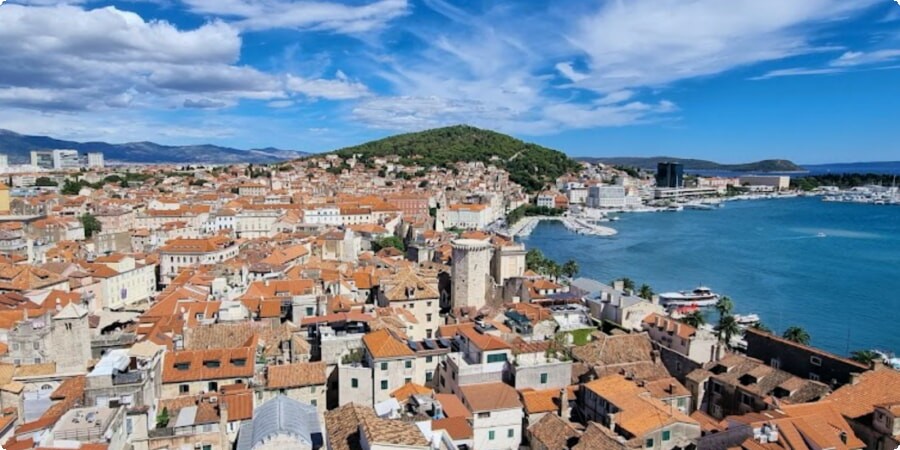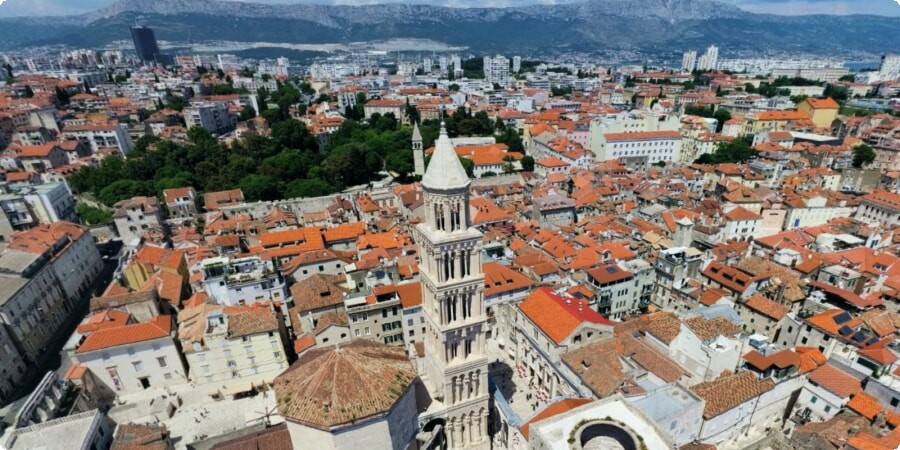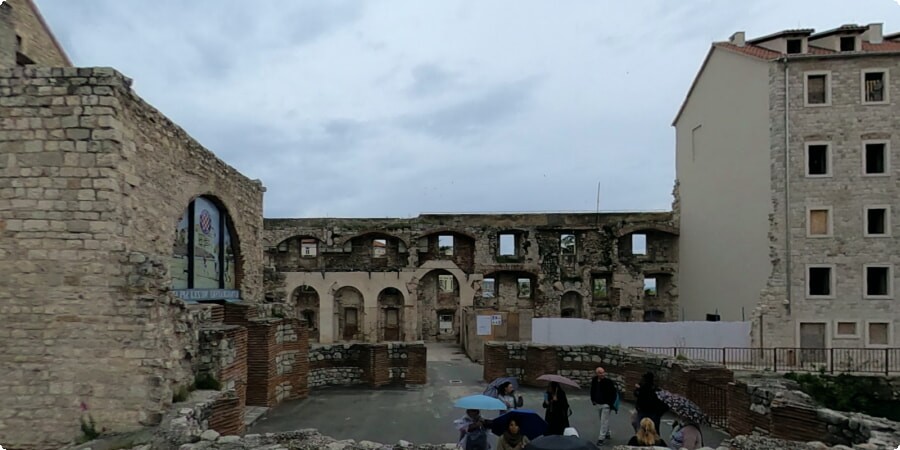Nestled within the heart of Croatia's coastal city of Split lies a remarkable testament to the grandeur of the Roman Empire: Diocletian's Palace. This ancient complex, designated as a UNESCO World Heritage site, stands as a magnificent window into Croatia's imperial past, offering visitors a glimpse into the splendor and opulence of ancient Rome.
Constructed in the 4th century AD by Emperor Diocletian, the palace served as a retreat for the retired ruler, showcasing his wealth and power in its grand architectural design. Over the centuries, the palace has evolved into a thriving urban center, with its labyrinthine streets and historic buildings providing a tangible link to Croatia's rich cultural heritage.
As one of the best-preserved examples of Roman architecture in the world, Diocletian's Palace continues to captivate visitors with its imposing walls, majestic gates, and intricate stone carvings. Join us on a journey through history as we explore the wonders of this iconic landmark and uncover the secrets of Croatia's imperial past.
History of Diocletian's Palace
To truly appreciate the significance of Diocletian's Palace, it's essential to understand its fascinating history. Emperor Diocletian, known for his ambitious building projects and administrative reforms, commissioned the palace towards the end of his reign as a place of retirement and leisure. Constructed between 295 and 305 AD, the palace was strategically located on the shores of the Adriatic Sea, allowing the emperor to enjoy the mild climate and scenic views of the surrounding coastline.
Following Diocletian's death, the palace underwent various transformations, serving as a residence for subsequent rulers, a military garrison, and even a refuge for fleeing refugees during times of conflict. Despite these changes, the palace remained a symbol of imperial power and authority, with its architectural marvels standing as a testament to the wealth and influence of the Roman Empire.

Over the centuries, the palace gradually fell into disrepair, with parts of it being repurposed for residential and commercial use. However, efforts to preserve and restore the palace began in the 20th century, leading to its designation as a UNESCO World Heritage site in 1979. Today, Diocletian's Palace stands as a living testament to Croatia's rich historical legacy, attracting visitors from around the world to marvel at its ancient splendor.
Architectural Features and Layout
Diocletian's Palace is renowned for its impressive architectural features and intricate layout, reflecting the grandeur and sophistication of Roman design. The palace covers an area of approximately 38,000 square meters and is surrounded by imposing walls and fortifications, which served both defensive and aesthetic purposes.
At the heart of the palace lies the Peristyle, a grand colonnaded courtyard that served as the ceremonial center of Diocletian's residence. Flanked by columns and adorned with statues and reliefs, the Peristyle exudes an air of majesty and grandeur, offering visitors a glimpse into the emperor's opulent lifestyle.
Throughout the palace complex, visitors can explore a labyrinth of narrow streets, hidden passageways, and ancient buildings, each revealing a different aspect of Roman life and culture. From the imposing gates of the palace to the intimate courtyards and living quarters, every corner of Diocletian's Palace tells a story of Croatia's imperial past.
For travelers looking to explore Diocletian's Palace and the surrounding area, renting a car in Zagreb is a convenient option. You can book a car rental through CarsCombined to ensure a smooth and hassle-free journey to this historic landmark.
Planning Your Visit to Diocletian's Palace
Before embarking on your journey to Diocletian's Palace, it's essential to plan ahead to make the most of your experience. Here are some practical tips to help you prepare for your visit:
-
Opening Hours and Admission: Check the palace's opening hours and admission fees, as they may vary depending on the season and special events. Consider purchasing tickets in advance to avoid long queues at the entrance.
-
Guided Tours: Consider joining a guided tour of Diocletian's Palace to gain deeper insights into its history and architecture. Knowledgeable guides can provide fascinating anecdotes and historical context that enhance your understanding of this ancient landmark.
-
Accessibility: Diocletian's Palace is a UNESCO World Heritage site and a popular tourist destination, so be prepared for crowds, especially during peak seasons. Wear comfortable shoes and be mindful of uneven surfaces and stairs as you explore the palace's labyrinthine streets.
Preserving the Legacy of Diocletian's Palace
As a UNESCO World Heritage site, Diocletian's Palace is protected by international conservation standards to ensure its preservation for future generations. Here are some efforts aimed at safeguarding the palace's legacy:

-
Conservation Projects: Ongoing conservation projects focus on maintaining and restoring the palace's architectural features, including its walls, buildings, and monuments. These efforts aim to prevent deterioration and protect the palace from the effects of time and environmental factors.
-
Archaeological Research: Archaeological research within Diocletian's Palace continues to uncover new discoveries and shed light on its history and significance. Excavations reveal hidden layers of the palace's past, providing valuable insights into ancient Roman life and culture.
-
Sustainable Tourism: Sustainable tourism initiatives promote responsible visitor behavior and minimize the impact of tourism on the palace and its surroundings. These efforts encourage respect for the site's cultural heritage and natural environment, ensuring that future generations can continue to enjoy its wonders.
Experiencing Diocletian's Palace
Visiting Diocletian's Palace is more than just a sightseeing excursion—it's an immersive journey through history and culture that leaves a lasting impression on all who venture within its walls. As you explore its ancient streets and marvel at its architectural wonders, take a moment to appreciate the significance of this iconic landmark and the legacy it represents.
Whether you're captivated by the grandeur of the Peristyle, enchanted by the charm of its hidden courtyards, or simply soaking in the atmosphere of this ancient city within a city, Diocletian's Palace offers a truly unforgettable experience that celebrates Croatia's imperial past and cultural heritage. As you bid farewell to this historic landmark, carry with you the memories of your time spent amidst the splendor of Diocletian's Palace, and let its legacy inspire you to explore the wonders of the world with curiosity and reverence.

